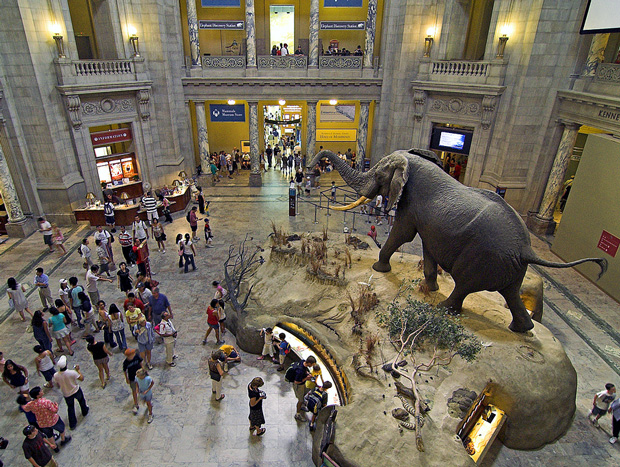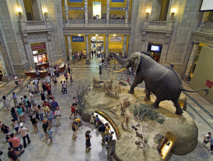Smashed urns litter the floor, gilded shelves are bent wildly out of shape and a gold-leaf painting of battling peacocks -- a commentary on the friction between art and money -- hangs on the wall.
"I do wonder what he'd think about this," said Waterston when asked how Whistler, who died in London in 1903 at the age of 69, might think of his dark meditation on artistic excess and decay.
"There is a harshness to this, and an ugliness to this as well, and I'm not sure how he would respond to that," he told AFP at the Smithsonian's Freer-Sackler museum of Asian art.
Once close friends, Whistler and Leyland fell out as the artist stumbled towards bankruptcy and his patron became his principal creditor.
The Peacock Room, which doubled as Leyland's dining room, was acquired from his heirs in 1904 by American industrialist Charles Lang Freer, who had its entire contents packed up in crates, shipped across the Atlantic and then reassembled in his Detroit home.
After Freer's death in 1919, it was relocated one last time to what is now the Freer-Sackler gallery, where it opened to the public in 1923 and remains a part of its permanent collection.
Waterston's installation was originally displayed at the Massachusetts Museum of Contemporary Art. It is to go on tour after its stint at the Freer-Sackler wraps up on January 2 next year.
-------------------------------------------------------------------------------------------------------------------
"I do wonder what he'd think about this," said Waterston when asked how Whistler, who died in London in 1903 at the age of 69, might think of his dark meditation on artistic excess and decay.
"There is a harshness to this, and an ugliness to this as well, and I'm not sure how he would respond to that," he told AFP at the Smithsonian's Freer-Sackler museum of Asian art.
Once close friends, Whistler and Leyland fell out as the artist stumbled towards bankruptcy and his patron became his principal creditor.
The Peacock Room, which doubled as Leyland's dining room, was acquired from his heirs in 1904 by American industrialist Charles Lang Freer, who had its entire contents packed up in crates, shipped across the Atlantic and then reassembled in his Detroit home.
After Freer's death in 1919, it was relocated one last time to what is now the Freer-Sackler gallery, where it opened to the public in 1923 and remains a part of its permanent collection.
Waterston's installation was originally displayed at the Massachusetts Museum of Contemporary Art. It is to go on tour after its stint at the Freer-Sackler wraps up on January 2 next year.
-------------------------------------------------------------------------------------------------------------------









 Home
Home Politics
Politics











